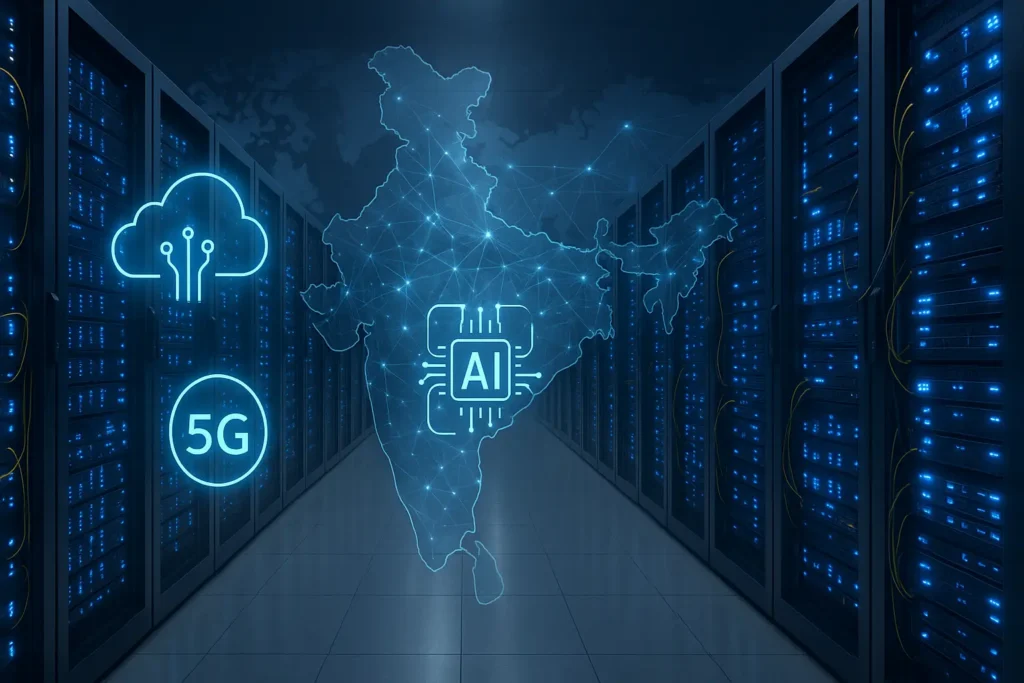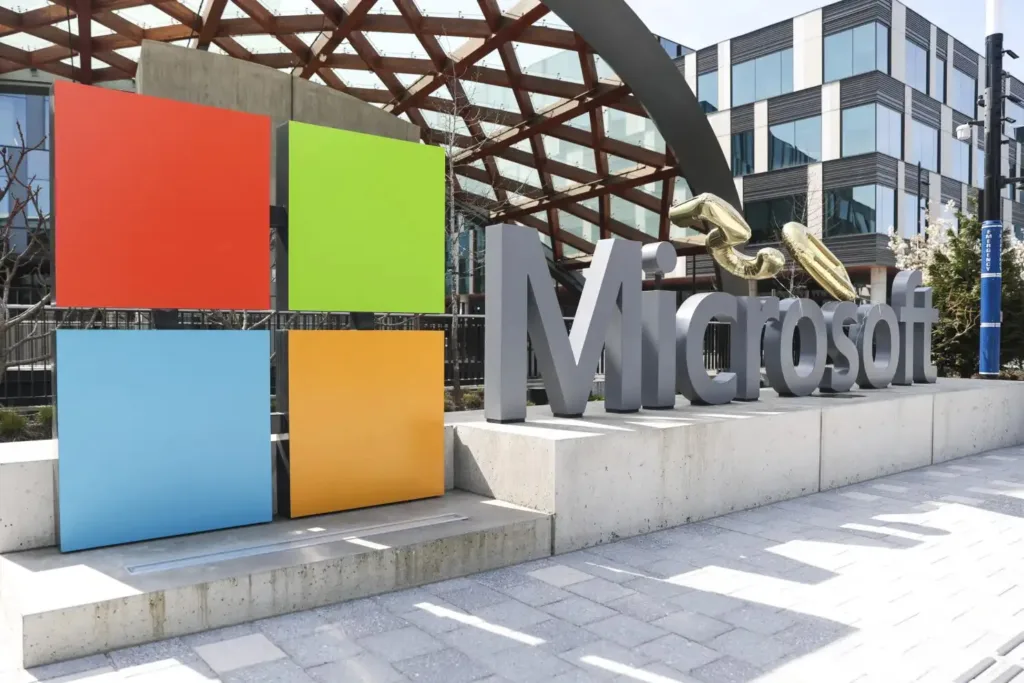India is in the middle of a massive data centre boom. In just a few years, the country has gone from being an emerging market to one of the fastest-growing hubs for digital infrastructure worldwide. Investments are pouring in from both domestic giants like Reliance, Adani, and Airtel, and global leaders like Amazon Web Services, Google, Microsoft, and Equinix.
By 2030, India’s data centre capacity is expected to cross 5 gigawatts (GW) — up from less than 1.3 GW in 2025. Backed by an estimated $22 billion+ in capital investment, this is more than just infrastructure growth. It’s the foundation of India’s digital economy, supporting everything from AI to e-commerce, streaming, fintech, and cloud services.

Key Highlights
- India’s data centre capacity is projected to exceed 5 GW by 2030, supported by $20–25 billion in new investments.
- Cities like Mumbai, Chennai, Delhi-NCR, and Hyderabad lead the growth, with Tier-II cities also emerging as hotspots.
- Global giants like AWS, Microsoft, Google and Indian players like Reliance, Adani, Airtel are building massive hyperscale campuses.
- AI, 5G, cloud computing, and data localization laws are driving explosive demand.
- Challenges include power supply, sustainability, and cooling needs, pushing operators towards green data centres.
What’s Driving the Boom?
Several factors are pushing India’s data centre industry into overdrive:
- AI and Generative AI – Modern AI workloads need huge amounts of storage and compute power, driving demand for high-density, AI-ready data centres.
- Cloud adoption – Businesses of all sizes are moving away from legacy physical servers to scalable cloud platforms, which require massive backend infrastructure.
- Government policies – Initiatives like Digital India, Make in India, and the Digital Personal Data Protection Act (DPDPA) 2023 mandate local storage of sensitive data, boosting domestic capacity.
- 5G rollout & edge computing – With 5G expanding, data needs to be processed closer to users. This fuels both hyperscale facilities in metros and edge data centres in Tier-II and Tier-III cities.
- Digital population growth – With nearly 900 million internet users expected by 2025, India’s demand for digital services is unmatched outside of China.
Who’s Building India’s Data Centres?
The boom is being led by a mix of Indian conglomerates and global cloud providers:
- Reliance Jio, AdaniConneX, and Airtel Nxtra are setting up hyperscale campuses across metros and smaller cities.
- Yotta Infrastructure has committed ₹39,000 crore to build massive data centre parks.
- CapitaLand Investment, STT GDC India, and NTT Global are also rapidly expanding across Chennai, Pune, Bengaluru, and Hyderabad.
- Global hyperscalers like AWS, Google Cloud, and Microsoft Azure are investing billions to expand their Indian regions.
As a result, Mumbai and Chennai dominate the market today, but cities like Hyderabad, Pune, Noida, Mohali, and Vijayawada are emerging as new hubs.
Why India Is Becoming a Global Digital Hub
India’s rise isn’t just about local demand — it’s about global positioning.
- Asia-Pacific strategy: With its scale, talent, and cost advantage, India is increasingly seen as the Asia-Pacific alternative to Singapore and Hong Kong, where capacity is saturated.
- Global investments: Between 2019–2024, India’s data centre sector attracted nearly $60 billion in investments, with another $20–25 billion expected by 2030.
- Competitive edge: India offers lower hosting costs and access to renewable power, making it an attractive option for companies serving both domestic and international clients.
📌 Read More
Challenges: Power, Costs, and Sustainability
The boom isn’t without challenges:
- Energy demand: Data centres are power-hungry. Sustaining 5 GW+ capacity will test India’s electricity grid, especially as many state power distribution companies (DISCOMs) face financial stress.
- Capital costs: Building a data centre in India costs about ₹50–70 crore per MW, excluding land. With AI-ready designs needing advanced cooling, costs are rising.
- Sustainability: Operators are under pressure to adopt renewable energy and energy-efficient cooling. Green-certified facilities currently make up 25% of the market but are expected to rise to 40% by 2030.
These challenges underline the importance of green data centres and policy coordination to sustain long-term growth.
The Future: India’s Digital Backbone by 2030
If current projections hold, India’s data centre sector will:
- Triple in built-up area, from 16 million sq. ft. today to 55 million sq. ft. by 2030.
- Reach over 5 GW capacity, making it one of the top five global markets.
- See growth in Tier-II and Tier-III cities, improving digital access beyond metros.
- Emerge as a leader in AI-ready, green, and edge data centre infrastructure.
Globally, India’s boom has ripple effects. It strengthens the Asia-Pacific digital network, provides global tech companies with scalable alternatives to mature markets, and positions India as a critical node in the global digital supply chain.
Conclusion: More Than Just Buildings
India’s data centres aren’t just about servers and storage — they’re about shaping the future of its digital economy. From powering AI applications to streaming your favorite show, from enabling fintech apps to supporting startups, data centres are becoming the backbone of everyday digital life.
With billions flowing in, the big question is no longer if India will be a global digital hub — it’s how fast it will get there, and whether it can build sustainably. If it succeeds, the world won’t just see India as a consumer of digital services, but as one of the key infrastructure providers of the global internet age.



